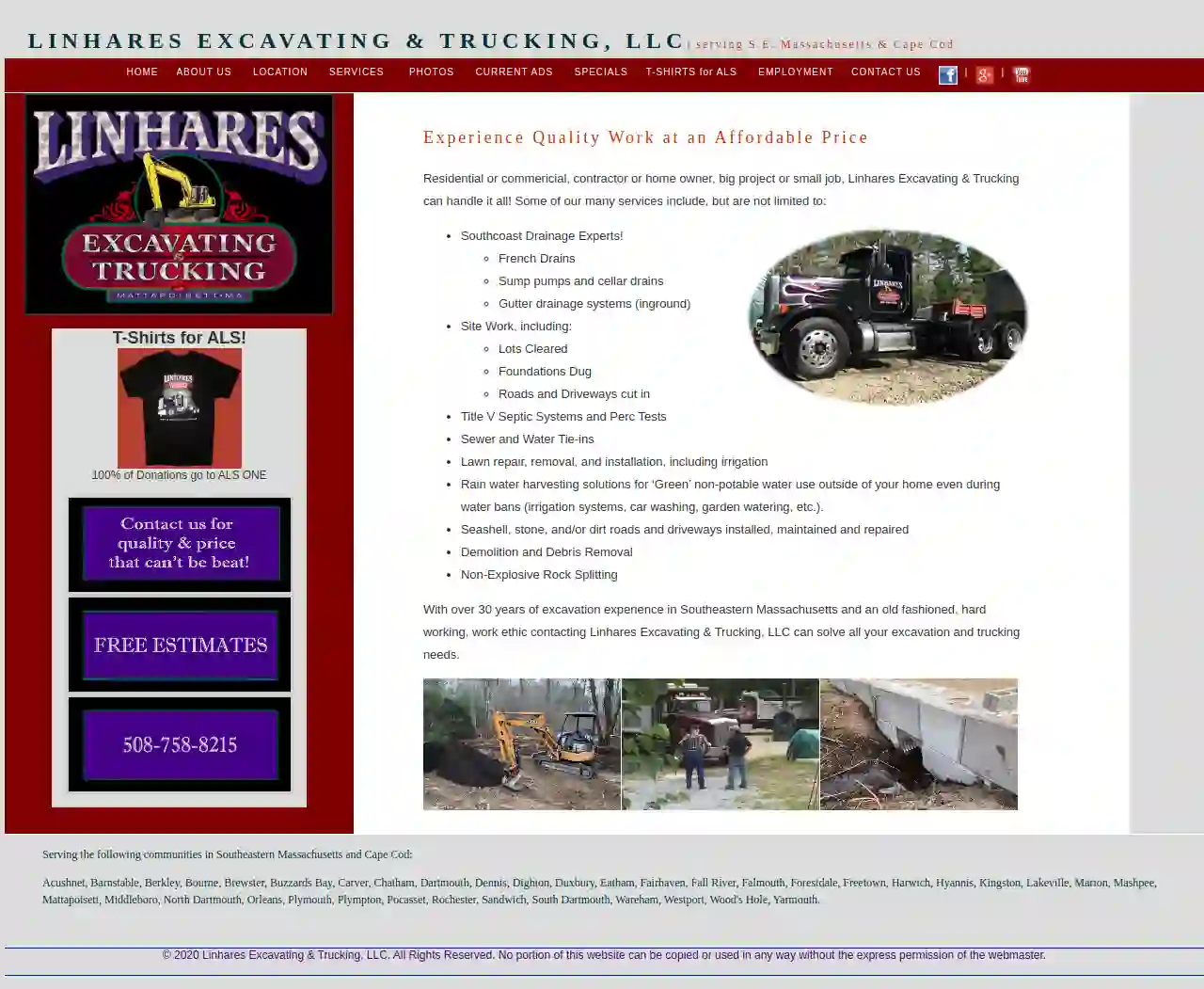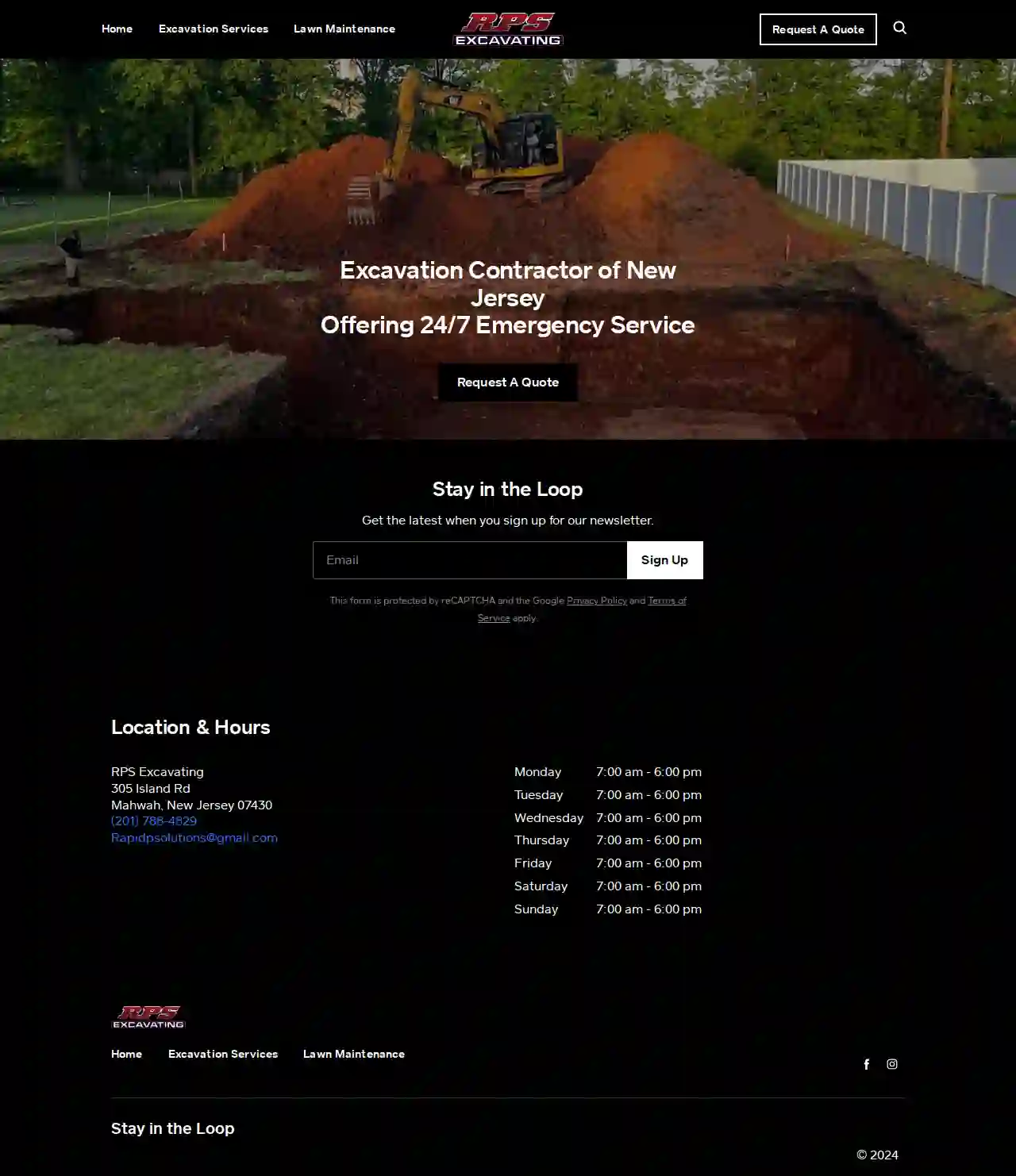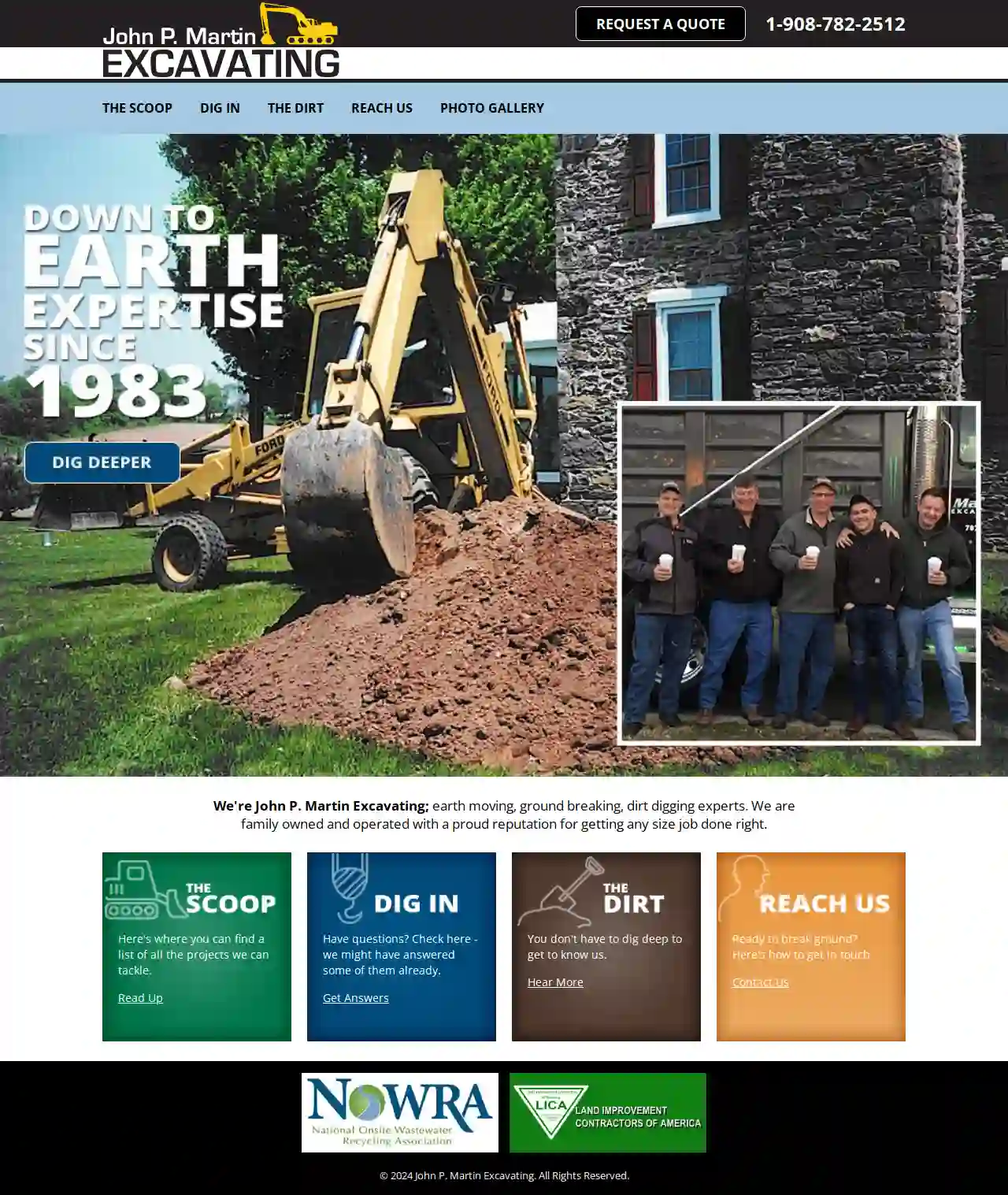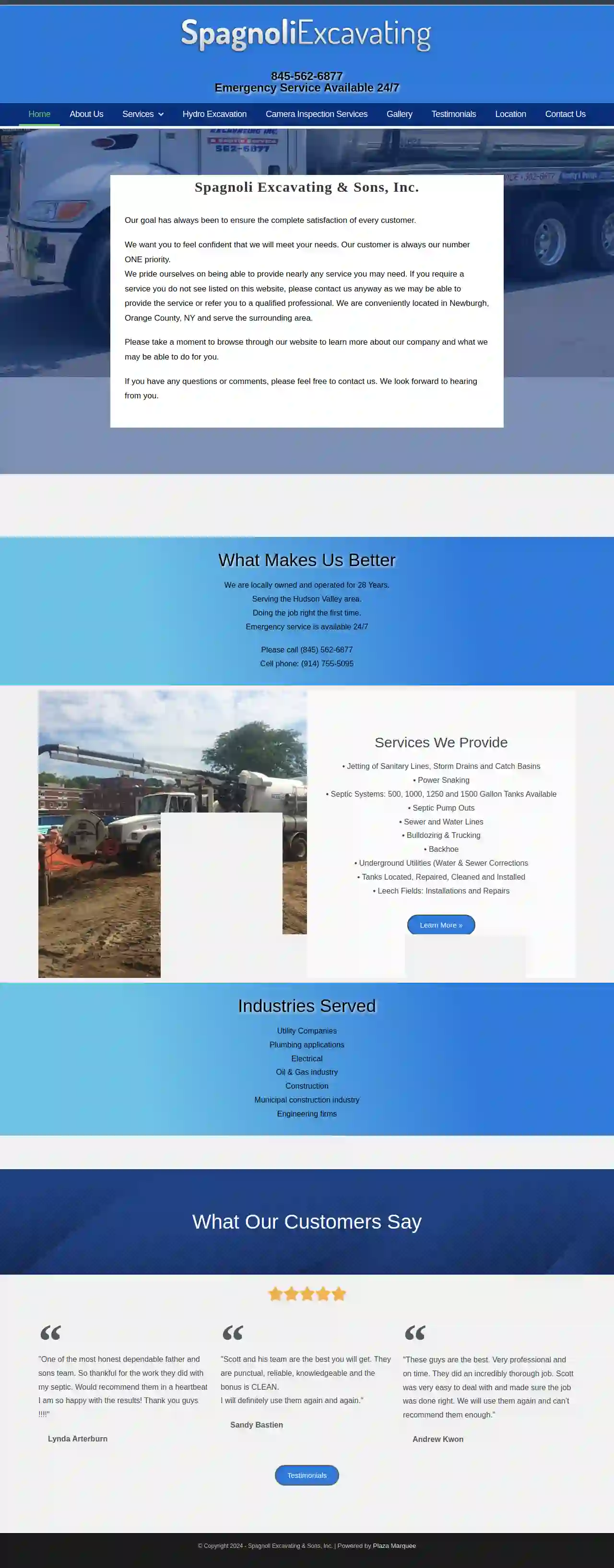Demolition Contractors Pawling
Top Demolition Contractor in Pawling
Receive up to 3 Demolition Services quotes for your project today! Compare profiles, reviews, accreditations, portfolio, etc... and choose the best offer.

Quiver League
531 reviews381 South 5th Street, Brooklyn, NY, 11211, USAbout Quiver League Quiver League is at the forefront of revolutionizing the construction and land surveying industry. With a commitment to excellence and innovation, we specialize in monitoring the stability of adjacent structures during Demolition, Support of Excavation ( SOE), and foundation work, along with delivering comprehensive Land Surveying services. What makes Quiver Unique? Quiver League distinguishes itself within the New York City construction industry by leveraging innovative custom software systems. These cutting-edge tools empower both our field and office teams, facilitating the completion of projects at an unprecedented pace—far surpassing the capabilities of our competitors. Our distinctive software not only ensures efficiency but also prevents overwhelm, enabling us to seamlessly manage even the most demanding workloads. Moreover, it allows us to initiate new projects and field installations with remarkable agility, responding promptly to our client's needs, even on short notice.
- Services
- Why Us?
- Testimonials
- Gallery
Get Quote
Linhares Excavating & Trucking, LLC
52 reviewsMattapoisett, USLinhares Excavating & Trucking, LLC: Your Trusted Partner for Excavation and Trucking Needs in Southeastern Massachusetts and Cape Cod For over 30 years, Linhares Excavating & Trucking, LLC has been a leading provider of excavation and trucking services in Southeastern Massachusetts and Cape Cod. We are a family-owned and operated business with a strong commitment to quality, customer satisfaction, and a dedication to providing our clients with the best possible experience. Whether you're a homeowner, contractor, or business owner, we have the expertise and resources to handle any project, big or small. Our team of experienced professionals is dedicated to providing you with the highest quality workmanship and exceptional customer service. We understand that your project is important to you, and we're committed to working with you every step of the way to ensure your complete satisfaction. We take pride in our commitment to safety and environmental responsibility. We use the latest equipment and techniques to ensure that all our projects are completed on time and within budget, while minimizing our impact on the environment. Contact us today for a free estimate and let us show you why Linhares Excavating & Trucking, LLC is the right choice for all your excavation and trucking needs.
- Services
- Why Us?
- Gallery
Get Quote
Yankels Demolition
3.713 reviews341A Wallabout St, Brooklyn, 11206, USGold Standard in Demolition and Waste Management We are a licensed, bonded and insured company headquartered in Brooklyn, and serving the Tri State area. Yankel’s received a Buildzoom score of 104, placing us in the top 10th percentile of nearly 80,000 contractors nationwide. Look us up on Buildzoom.com under Atweek, Inc. Also read about us in our recent feature article in the Business Talk section of AMI Magazine. Where we Started YANKEL’S was founded in 1999 by Yehoshua Werzberger with only a small Ford Pick-up truck and a big vision. The Pick-up has since been replaced with an impressive fleet of trucks and mobile machinery; the big vision is still here, as is the personal touch. Having done all the leg work as he started and grew his business, Yehoshua has intimate knowledge of the work involved in every division of the company. Now at the helm of a full- service corporation and running one of the largest waste management facilities in the New York region, Yehoshua is still actively involved in every project. Why Choose Us We hold our customers in the highest regard, and their satisfaction drives every decision we make. Expect personalized attention, responsive communication, and a team that goes the extra mile to understand and fulfill your needs. Highly skilled and experienced professionals who are experts in their field. From project planning to execution, our team’s knowledge and expertise ensures a safe and successful demolition, meeting all necessary regulations and standards. We recognize the importance of delivering prompt results. With an unwavering commitment to efficiency, we execute every demolition with precision and speed, allowing you to move forward with your plans quickly and confidently. Reliability is the cornerstone of our reputation. Count on us to be there when you need us, delivering consistent and dependable services that you can trust. Our experience speaks for itself, and we aim to exceed your expectations every step of the way.
- Services
- Why Us?
- Testimonials
- Gallery
Get Quote
Shackelford Construction and Hauling, LLC
4.76 reviews350 South Industrial Parkway, Yazoo City, USAbout Us Shackelford Construction and Hauling, LLC is a Mississippi-based construction company, with additional offices in Houston, TX, and yards located in New Mexico, Texas, South Carolina, and Georgia. We specialize in a range of services including land clearing, demolition, excavation, grading, soil stabilization, storm drainage, stone placement, concrete, building, and site maintenance for the railroad, oilfield, energy, industrial, and large commercial industries. Our top priorities are safety and customer satisfaction. Shackelford is licensed to operate in 30 states across the United States on individual projects up to 55 million dollars. Our client list ranges from all class 1 railroads and privately-owned short lines to oil and gas, chemical, industrial, and energy. Our Mission Finish every job ahead of schedule and without incident, allowing our customers the earliest possible financial return on their investment. Team Jay Shackelford Owner 38 years of experience Hunter Shackelford Operations Manager 26 years of experience Alfonzo Hernandez Safety Manager 26 years of experience Reeves Shackelford Manager of Estimating & Project Management 27 years of experience Clint Shackelford Business Development 14 years of experience Reeves Shackelford Estimating & Project Management
- Services
- Why Us?
- Our Team
- Gallery
Get Quote
RPS Excavating
518 reviews10000 County Rd 12, Seaforth, N0L 1P0, USAbout RPS Excavating RPS Excavating is a family-owned and operated business with over 20 years of experience in the excavating industry. We are committed to providing our clients with high-quality services at competitive prices. We specialize in a wide range of excavating services, including: Site preparation Grading Demolition Utility installation Drainage And more! We are fully licensed and insured, and we have a team of experienced and qualified professionals who are dedicated to providing our clients with the best possible service. We are committed to safety and environmental responsibility, and we always strive to exceed our clients' expectations. Contact us today for a free estimate!
- Services
- Why Us?
Get Quote
John Martin Excavating
510 reviews123 Main Street, City, 12345, USAbout JPMartinez Excavating JPMartinez Excavating is a family-owned and operated business serving the greater [CITY] area. We have over 20 years of experience in the excavating industry, providing high-quality services to both residential and commercial clients. Our commitment to customer satisfaction and attention to detail has earned us a reputation for excellence in the community. We understand that excavating projects can be complex and require a high level of expertise. That's why we have a team of skilled and experienced professionals who are dedicated to providing you with the best possible service. We use only the latest equipment and techniques to ensure that your project is completed on time and within budget. Whether you need site preparation, foundation work, utility installation, or any other excavating service, JPMartinez Excavating is the company to call. We are committed to providing our clients with the highest level of service and satisfaction. Contact us today for a free estimate.
- Services
- Why Us?
- Testimonials
Get Quote
Spagnoli Excavating Inc
517 reviews47 South Plank Road, Newburgh, 12550, USSpagnoli Excavating & Sons, Inc. At Spagnoli Excavating & Sons, Inc., our unwavering commitment is to ensure the complete satisfaction of every customer. We strive to provide you with the confidence that your needs will be met, placing our customers as our top priority. We take pride in offering a wide range of services to cater to your diverse requirements. If you need a service not listed on our website, don't hesitate to contact us. We may be able to assist you or refer you to a qualified professional. Conveniently located in Newburgh, Orange County, NY, we serve the surrounding area. Explore our website to learn more about our company and the services we can provide. Feel free to reach out with any questions or comments. We look forward to hearing from you.
- Services
- Why Us?
- Testimonials
- Gallery
Get Quote
Christiana Excavating Co.
4.610 reviews2016 Sunset Lake Road, Newark, 19702, USAbout Us Christiana Excavating Co. was founded in 1989 by Mike Connor and later joined by his brother, Paul Connor, in 2001. Teamed with a great staff, the company grew exponentially into the successful business it is today. CEC is a leading site excavating and underground utilities contractor serving all three counties in Delaware. The Connor brothers’ handshake business men reputation stands true today and is evident in every project they carry across the finish line. The valuable lessons and knowledge gained over the years by Mike and Paul Connor, has been dutifully passed down to CEC’s key personnel, and is an integral part of partnering with their clients. Christiana Excavating is a preferred site development contractor performing large scale residential and commercial projects. With hard work, diligence, and customer satisfaction a priority, great working relationships with clients and colleagues in the industry have been established. Christiana Excavating’s impressive fleet consists of excavators and dozers of all scales, a crusher to provide approved recycled aggregate for GABC placements, curb machine and highly integrated GPS systems in equipment for efficiency. CEC believes in offering quality work done correctly and efficiently, while staying within budget and focusing on safety. Safety is of paramount importance to our employees and our colleagues on the job site.
- Services
- Why Us?
- Our Team
- Gallery
Get Quote
New Bridge Contracting Corp
52 reviews123 Newbridge Ave, Toronto, M4W 2P3, USAbout Newbridge Contracting Inc. Newbridge Contracting Inc. is a reputable and experienced general contracting company serving the Greater Toronto Area. We are dedicated to providing high-quality construction services for both residential and commercial clients. Our team of skilled professionals is committed to delivering projects on time and within budget, while maintaining the highest standards of workmanship. We understand that building or renovating your home or business is a significant investment. That's why we take a personalized approach to every project, working closely with our clients to ensure their vision is realized. From initial planning and design to final construction and completion, we are with you every step of the way. At Newbridge Contracting Inc., we pride ourselves on our commitment to customer satisfaction. We believe in building lasting relationships with our clients, based on trust, transparency, and open communication. We are confident that you will be pleased with the results of your project.
- Services
- Why Us?
Get Quote
Over The Edge Excavating LLC
54 reviewsP.O. Box 164, Riverdale, 07457, USOver The Edge Excavating Over The Edge Excavating is a well-established and highly regarded excavation contractor. We are known for providing top-notch services that cater to the specific needs and management requirements of our clients, all at the most competitive rates. Our team of experienced professionals is dedicated to delivering exceptional results and exceeding your expectations. Contact us today to learn how we can help you with your next project.
- Services
- Why Us?
- Accreditations
- Gallery
Get Quote
Over 22,076+ Excavation Contractors in our network
Our excavation experts operate in Pawling and beyond!
ExcavationHQ has curated and vetted Top Excavation Contractors in Pawling. Find the most reliable contractor today.
Frequently Asked Questions About Demolition Contractors
- Waste Generation: Demolition generates a large volume of debris, contributing to landfill space and potentially releasing harmful substances into the environment if not disposed of properly.
- Air Pollution: Dust and particulate matter released during demolition can impact air quality, affecting human health and the environment.
- Noise Pollution: Demolition activities can generate significant noise, disturbing nearby residents and wildlife.
- Resource Depletion: Demolition consumes resources that could be salvaged and reused, contributing to resource depletion and environmental degradation.
- Size and Complexity of the Structure: Larger and more complex structures, such as multi-story buildings, require more time, labor, and specialized equipment, increasing costs.
- Type of Demolition: Different demolition methods, such as implosion, wrecking ball, or high-reach demolition, have varying costs.
- Material Disposal: Disposal fees for demolition debris can contribute significantly to the overall cost, depending on the type and quantity of materials.
- Location and Accessibility: Demolition in densely populated areas or with limited access may require more planning and specialized equipment, affecting costs.
- Hazardous Materials: The presence of asbestos, lead paint, or other hazardous materials requires specialized removal and disposal procedures, adding to the expenses.
- Dust Suppression: Use water spraying, misting systems, or other dust suppression techniques to control airborne particles.
- Noise Barriers: Erect temporary noise barriers around the demolition site to reduce noise transmission to nearby properties.
- Work Schedule: Schedule noisy demolition activities during permitted hours to minimize disturbance to neighbors.
- Communication: Keep neighbors informed about the demolition schedule and any potential disruptions.
What are the environmental impacts of demolition?
How much does demolition cost in the USA?
How can I minimize the dust and noise from demolition?
How can I tell if my building contains asbestos?
What are the environmental impacts of demolition?
- Waste Generation: Demolition generates a large volume of debris, contributing to landfill space and potentially releasing harmful substances into the environment if not disposed of properly.
- Air Pollution: Dust and particulate matter released during demolition can impact air quality, affecting human health and the environment.
- Noise Pollution: Demolition activities can generate significant noise, disturbing nearby residents and wildlife.
- Resource Depletion: Demolition consumes resources that could be salvaged and reused, contributing to resource depletion and environmental degradation.
How much does demolition cost in the USA?
- Size and Complexity of the Structure: Larger and more complex structures, such as multi-story buildings, require more time, labor, and specialized equipment, increasing costs.
- Type of Demolition: Different demolition methods, such as implosion, wrecking ball, or high-reach demolition, have varying costs.
- Material Disposal: Disposal fees for demolition debris can contribute significantly to the overall cost, depending on the type and quantity of materials.
- Location and Accessibility: Demolition in densely populated areas or with limited access may require more planning and specialized equipment, affecting costs.
- Hazardous Materials: The presence of asbestos, lead paint, or other hazardous materials requires specialized removal and disposal procedures, adding to the expenses.
How can I minimize the dust and noise from demolition?
- Dust Suppression: Use water spraying, misting systems, or other dust suppression techniques to control airborne particles.
- Noise Barriers: Erect temporary noise barriers around the demolition site to reduce noise transmission to nearby properties.
- Work Schedule: Schedule noisy demolition activities during permitted hours to minimize disturbance to neighbors.
- Communication: Keep neighbors informed about the demolition schedule and any potential disruptions.